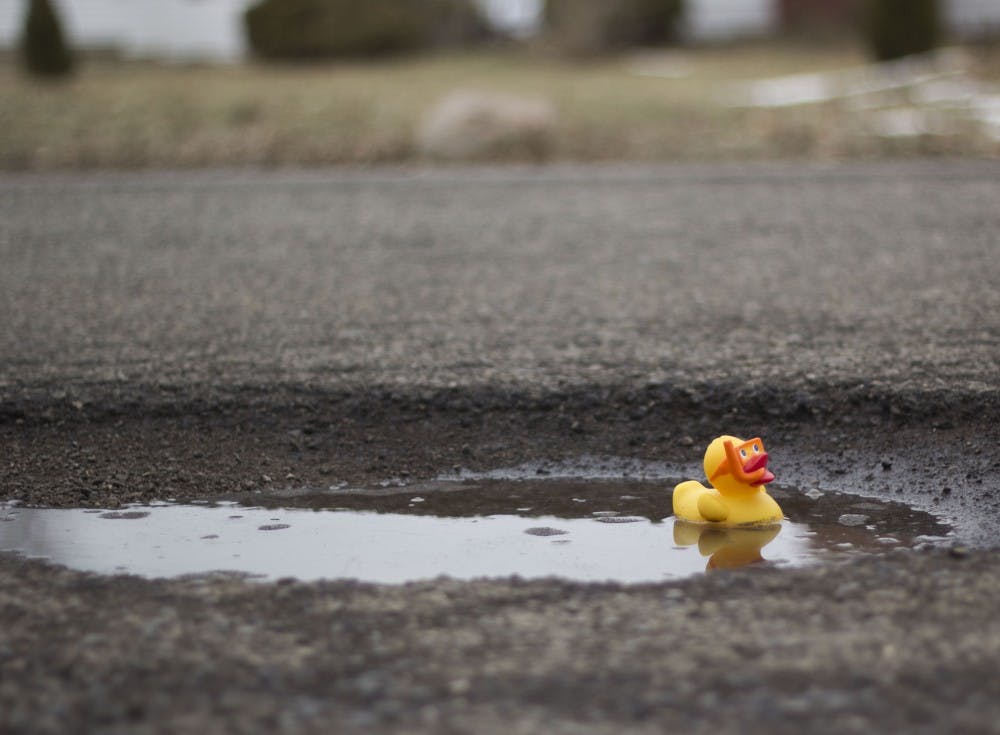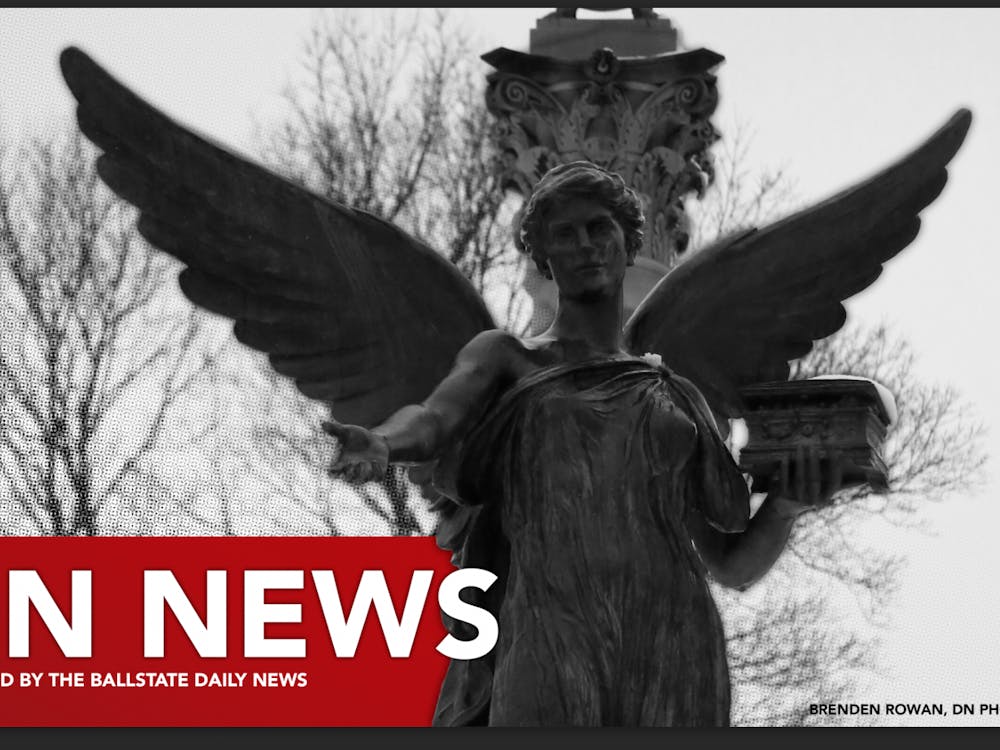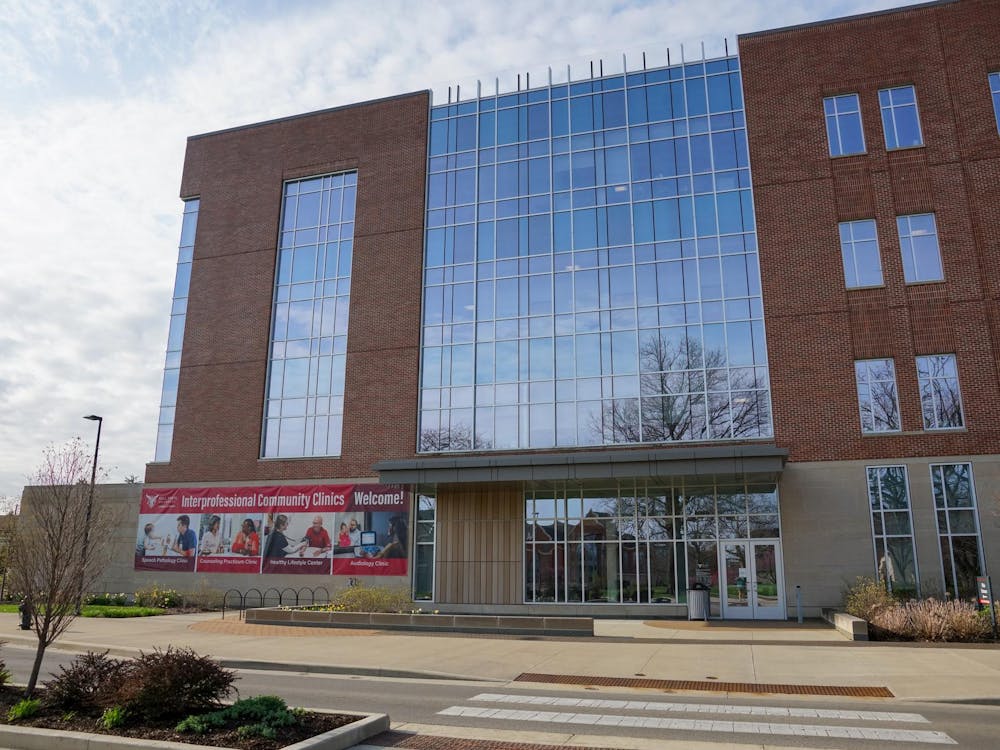$60,000 spent last year to patch up roads
$16,000 extra spent so far during the winter on patching up roads
$61 a ton for hot-mix asphalt
$75 to $86 a ton for cold-mix asphalt
Tweet, call or submit online to report
The city has a Twitter account, @MunciePotHoles, for people to report potholes.
To contact the Muncie Street Department by phone, call 765-747-4847 between 7 a.m. and 3 p.m. Monday through Friday.
Outside of office hours, submit an online form.
• Muncie has spent $16,000 more than last year on pothole repairs.
• In the winter, the city uses a cold-mix asphalt to temporarily fix potholes.
• Donnie Wright, supervisor for the Department of Street and Public Works, said the city can fill about a hundred potholes a day.
This year’s harsh winter conditions already have caused Muncie to spend about $16,000 more than last year on repairing potholes, most of which goes toward a temporary fix.
The city spent roughly $60,000 last year on patching roads using hot and cold mixes, said Donnie Wright, supervisor for the Department of Street and Public Works. The expense was split evenly between the winter and the summer.
Hot-mix asphalt costs $61 a ton and is used when it is warm outside, said Linda Hayes, a secretary for the department. During the winter or when the temperature is too low, the cold-mix asphalt is used as a temporary repair and costs $75 to $86 a ton.
“We do the cold-mix temporary patch because the roads get so bad, we can’t just leave them open,” he said. “We just want to keep people’s vehicles from getting damage because it’s our responsibility to take care of the roads.”
If the weather permits, Wright said the city can fill about a hundred potholes a day. Patching up a pothole can only take a few minutes, depending on the size.
“We tend to focus on areas that receive the most complaints [about potholes],” he said.
Wright said his team has focused on filling the potholes that surround campus on Riverside and University avenues.
Whether or not that patch lasts a whole season depends almost entirely on chance.
“Ultimately, you can’t say on average how long it will last,” Wright said. “It depends on the winter and how busy the road is. They can last a day or two years.”
The amount of money the city spends on fixing potholes varies each year because the department gets money from wheel taxes, which are paid when a person registers any type of vehicle in the county. Not all counties use wheel taxes.
If the Department of Public Works finds that it is spending more money than normal on patching and requires more funds, it will to have to go through the City Council to get budget reappropriation, Hayes said.
Road patches make up a portion of its yearly budget but it does not include road paving, which is about $1.2 million, Wright said.
Mindy Wesley, a freshman vocal performance major, said she is afraid for her vehicle when she drives around Muncie.
“Basically, I’m afraid my car is going to explode,” she said. “I honestly forgot about [potholes] because the ice filled [them] up and now, I’ll probably have to get new tires.”
Junior computer technology major Ryan Zwilling said he preferred the snow on roads. After the snow melted, he said potholes became a problem near his apartment in University Estates.
“[The road near my apartment] gets a lot of traffic, and you have to try and dodge the potholes,” he said. “But I don’t think it will kill my car.”
Motorists can expect more permanent roadwork in the spring when the hot-mix plant, which closes during the winter, opens again.
“As soon as E&B Paving opens up in the spring, then we will start applying the hot-mix permanent fix for the potholes,” he said.
Wright has not heard an exact date as to when the plant will open, but that the city is already expecting to spend more money in the summer because of the $16,000 already spent on cold-mix patches.





